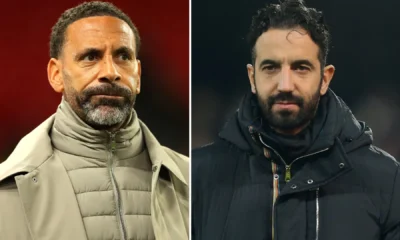Politics
2023 Presidential Poll: 4 Ways Peter Obi Proved He Won, 4 Possible Judgements From PEP Tribunal
All parties have closed their case, so there is no more room to admit or tender evidence. The court will rely on all the evidence before them.

SEE LIVE UPDATES ON 2023 ELECTIONS
At the Presidential Election Petition Tribunal, the Labour Party (LP) and its presidential candidate, Peter obi alongside the Peoples Democratic Party (PDP) and Alhaji Atiku Abubakar are the main challenger of the 2023 presidential election that made Bola Ahmed Tinubu the winner.
VerseNews Nigeria reports that the LP has tendered massive evidence to the court to prove that its candidate won the presidential election.
EC8-8 forms
Firstly, LP turned out to satisfy two copies of forms EC8-8 from INEC. These are hard copies that INEC claimed they fell back on. They had to do manual coalition since they didn’t do upload at the polling unit. Although INEC didn’t supply all the copies requested by the LP despite being under subpoena, but at least they turned out the ones they got from INEC.
INEC’s Result Viewing Portal (IREV)
Secondly, batch of documents are the IREV copies certified by INEC. All the uploads on IREV, including the more than 18,000 polling unit results that are blurred and unreadable, no matter the reason that INEC is given that prevented them from using IREV copies to do coalition, IREV is still recognized by the electoral law. So that is why Labour party submitted IREV copies.
IREV copies should be the same as hard copies when you pick one polling unit result in a particular area and search for it on the IREV, the result should be exactly the same thing because that result was snapped at the polling unit and uploaded.
Bimodal Voters Accreditation System (BVAS) report
The third evidence that LP submitted to prove that they won the election is the Bimodal Voters Accreditation System (BVAS) report. What is the importance of the BIVAS report? BVAS report will show over voting. BVAS machines are used to accredit the voters before they are able to vote. So if the number of voters in a particular polling unit is more than the number of accredited voters, it is simply over-voting.
What does the law say? In case of over-voting, what should happen? It says that in places where over-voting occurred that results there must be cancelled. So it is expected that the tribunal will cancel many results in places where they detect over-voting. States like Plateau, Kogi and others recorded over-voting.
DON’T MISS:
- Why Ex-Governor, Yari Was Arrested – DSS
- Election Petition: Why Tinubu Will Not Escape Disqualification
The witness present at the court
The fourth evidence that LP submitted to prove that they won the election is the statement by one of their witnesses, the professor of mathematics, who made all the calculations and tabulated all their figures and arrived at the fact that Peter Obi won the election.
This Online News Media gathered that at the end of the first hearing, Tinubu’s Council called only one witness, his party, All Progressive Congress (APC) didn’t call any witness.
The Independent National Electoral Commission (INEC) presented one wintess at the tribunal.
Expected Judgment With the Evidence
BVAS report – if the judges are able to verify the BIVAS report, that means over-voting will be proved and then cancel the elections in places where there was over-voting. The cancellation, will affect the number of votes of the candidates, so definitely many candidates will lose votes. Definitely the judges will order a recollection of the results, they will invite INEC to come to court and recollect the results.
If that is the decision, which results will INEC rely on to recollect the results to find out the actual winner of the presidential election? Before we find out which results they will use, let’s see the impact of the more than 18,000 blurred results on IREV.
The impact is very huge, let’s assume that 100% will vote in 1 polling unit and there are more than 18,000 polling units, thus approaching 2 million votes alone. Not that all of them will vote for one candidate, but it’s a huge figure, it is very significant, which might be higher than the margin between the first and second after the regulation of the figures. And in that situation, it means the election will be declared inconclusive, which ultimately means that elections will be held in these polling units to determine a winner.
So in terms of determining who won the presidential election at the presidential election tribunal, it seems that the judges will arrive at 3 conclusions, or maybe 4. But before we go through all of them, let’s see which presidential election results that INEC will use to recalculate the votes in case a regulation is ordered by the court.
All parties have closed their case, so there is no more room to admit or tender evidence. The court will rely on all the evidence before them, the IREV copies and the hard copies turned out by the labor party. And since they are the same thing, they will just use the IREV copies to do the coalition. In places where they are not available, they will default to the hard copies. So INEC will recalculate the results to determine a winner.























You must be logged in to post a comment Login